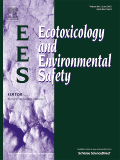
ECOTOXICOLOGY AND ENVIRONMENTAL SAFETY
Scope & Guideline
Elevating standards in ecotoxicology and public health research.
Introduction
Aims and Scopes
- Ecotoxicology of Chemical Pollutants:
Research examining the toxic effects of various chemical pollutants, including heavy metals, pesticides, and pharmaceuticals, on different organisms and ecosystems. - Bioremediation and Phytoremediation Strategies:
Studies focusing on the use of biological organisms, including plants and microbes, to remediate contaminated environments and improve soil health. - Environmental Health and Risk Assessment:
Assessment of the risks posed by environmental contaminants to human health and ecosystems, including epidemiological studies and biomonitoring. - Impact of Microplastics:
Research detailing the sources, distribution, and ecological effects of microplastics in various environments, particularly their interactions with living organisms. - Endocrine Disruption and Reproductive Toxicity:
Investigations into how environmental chemicals disrupt endocrine function and affect reproductive health across species. - Novel Analytical Techniques:
Development and application of innovative analytical methods for detecting and quantifying environmental pollutants, including advanced spectroscopic and chromatographic techniques. - Climate Change and Environmental Stressors:
Exploratory studies on how climate change and associated environmental stressors influence the toxicity and bioavailability of pollutants.
Trending and Emerging
- Microplastics and Their Ecotoxicological Impact:
An increase in studies investigating the effects of microplastics on aquatic and terrestrial organisms, reflecting growing concern over their prevalence and persistence in the environment. - Omics Approaches in Toxicology:
A trend towards utilizing transcriptomics, metabolomics, and proteomics to understand the biological impacts of environmental pollutants at a molecular level. - Endocrine Disrupting Chemicals (EDCs):
Heightened focus on the effects of EDCs on reproductive health and developmental processes, emphasizing their complex interactions with biological systems. - Climate Change Impacts on Toxicity:
Research exploring how climate change influences the behavior and toxicity of environmental pollutants, particularly under changing temperature and precipitation patterns. - Biological and Ecological Risk Assessment:
Emerging methodologies that integrate ecological and biological data into risk assessment frameworks, allowing for a more holistic understanding of environmental hazards. - Innovative Remediation Technologies:
Increased interest in novel bioremediation techniques, including the use of engineered microorganisms and biochar for contaminant degradation and soil health improvement. - Health Impacts of Environmental Pollution:
Growing emphasis on linking environmental exposures to specific health outcomes, particularly in vulnerable populations, through epidemiological studies.
Declining or Waning
- Traditional Chemical Risk Assessment:
There is a noticeable decrease in studies relying solely on conventional risk assessment methods, as newer methodologies incorporating multi-omics and network approaches gain prominence. - Single Pollutant Studies:
Research specifically targeting the effects of single pollutants is becoming less common, with a shift towards examining the complex interactions of multiple contaminants. - Ecotoxicological Studies on Non-Model Organisms:
Research on non-model organisms has decreased, possibly as researchers focus on more widely recognized species or model organisms that offer more straightforward experimental frameworks. - Historical Contaminants:
The focus on historical pollutants, such as legacy pesticides, appears to have waned, as attention shifts to emerging contaminants like pharmaceuticals and microplastics. - Basic Toxicological Mechanisms:
While foundational toxicological mechanisms are still important, there is a declining emphasis on purely mechanistic studies without ecological or health implications.
Similar Journals
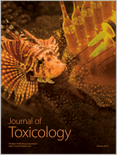
Journal of Toxicology
Bridging research and regulation in toxicology.Journal of Toxicology, published by HINDAWI LTD, stands as a pivotal open-access journal in the fields of toxicology and pharmacology since its inception in 2009. With an ISSN of 1687-8191 and an E-ISSN of 1687-8205, this journal is dedicated to disseminating high-quality research that critically examines the effects of toxic substances on living organisms. Located in Egypt and operating from their London office, it aims to provide an extensive platform for researchers worldwide to share findings that can inform better practices in safety and regulation. As of 2023, it has achieved significant recognition, holding a Q3 ranking in both the pharmacology and toxicology categories, and is indexed in Scopus with noteworthy percentile rankings (Toxicology: 57th and Pharmacology: 55th). With a focus on innovative studies and emerging areas such as environmental toxicology, biomarker research, and therapeutic interventions, the Journal of Toxicology invites both experienced researchers and students to contribute, thereby enhancing the breadth and depth of toxicological knowledge for the global scientific community.
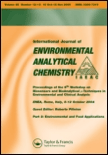
INTERNATIONAL JOURNAL OF ENVIRONMENTAL ANALYTICAL CHEMISTRY
Connecting science to global environmental challenges.INTERNATIONAL JOURNAL OF ENVIRONMENTAL ANALYTICAL CHEMISTRY, published by Taylor & Francis Ltd, stands as an essential resource in the interdisciplinary field of environmental science and analytical chemistry. With a history dating back to 1971 and a convergence period extending to 2024, this journal addresses urgent global challenges by providing a platform for high-quality research that encompasses pivotal aspects of environmental analysis, pollution, and public health. The journal’s significant impact is reflected in its 2023 rankings, placing it in the second and third quartiles across various relevant categories, including Analytical Chemistry, Environmental Chemistry, and Water Science and Technology. Researchers and practitioners are encouraged to contribute to its wealth of knowledge, making it a vital reference for emerging studies in Health, Toxicology and Mutagenesis and beyond. Although it is not an open-access journal, subscriptions provide unparalleled access to groundbreaking research that can influence both academia and industry practices.
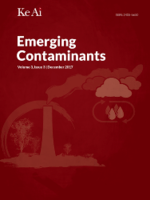
Emerging Contaminants
Navigating the complexities of emerging pollutants.Emerging Contaminants is a leading international journal dedicated to the exploration and analysis of novel pollutants, their effects, and the methodologies for their detection and remediation. Published by KEAI PUBLISHING LTD in China, this Open Access journal has been at the forefront of scientific discourse since its inception in 2015, allowing unrestricted access to cutting-edge research. With an impressive categorization in the top Q1 quartile across diverse fields, including Health, Toxicology and Mutagenesis, and Public Health, it ranks remarkably high—41st out of 665 in Public Health and 10th out of 133 in Toxicology according to Scopus metrics, demonstrating its vital role in advancing our understanding of environmental health risks. By bridging the gap between academia and practical applications, Emerging Contaminants not only enriches the scientific community but also serves as an essential resource for policymakers and industry leaders seeking effective solutions to environmental challenges. Researchers, professionals, and students alike are encouraged to engage with the journal’s comprehensive studies and findings, contributing to a sustainable future.

Reviews of Environmental Contamination and Toxicology
Illuminating the path to a healthier, safer planet.Reviews of Environmental Contamination and Toxicology is a leading journal published by SPRINGER, dedicated to advancing the understanding of environmental science, toxicology, and public health. Since its inception in 1987, this esteemed journal has established itself as an invaluable resource for researchers and practitioners alike, showcasing a wealth of peer-reviewed articles that delve into the complexities of environmental contaminants and their effects on human health and ecosystems. With an impressive impact factor and consistently ranking in the Q1 category across multiple fields including Health, Toxicology and Mutagenesis, as well as Public Health, this journal commands attention, boasting Scopus rankings that place it among the top-tier publications globally. Researchers will find that the journal provides not only in-depth reviews but also practical implications for policy and practice regarding environmental issues. Located in the heart of New York, Reviews of Environmental Contamination and Toxicology is poised to remain at the forefront of this critical field through 2024 and beyond, making it an essential addition to the library of any environmental health scholar or practitioner.

Frontiers in Toxicology
Connecting Researchers to the Heart of ToxicologyFrontiers in Toxicology, published by Frontiers Media SA, is a prominent open-access journal dedicated to advancing the understanding of toxicological science. Established in 2019, it serves as a vital forum for innovative research, offering insights into the pharmacological impacts and toxicological profiles of various substances. With its international reach based in Switzerland, this journal has quickly ascended in the academic community, achieving a notable Q1 ranking in Pharmacology, Toxicology and Pharmaceutics (Miscellaneous) and a Q2 ranking in Toxicology as of 2023. The journal is indexed in Scopus, where it ranks #8 out of 43 in its primary category, underscoring its influence and relevance in the field. The scope encompasses cutting-edge studies on the mechanisms of toxicity, including both human and environmental impacts, making it an essential resource for researchers, professionals, and students alike. By promoting open access to high-quality research, Frontiers in Toxicology plays a crucial role in enhancing knowledge sharing and fostering collaboration across disciplines.

ENVIRONMENTAL SCIENCE AND POLLUTION RESEARCH
Driving Innovation in Pollution Research and ManagementEnvironmental Science and Pollution Research is a premier international journal published by Springer Heidelberg, dedicated to advancing knowledge in the field of environmental science and pollution. With an impressive impact factor reflecting its vital contributions to research, the journal is categorized in the top quartiles (Q1 and Q2) across several domains, including Health, Toxicology and Mutagenesis, and Environmental Chemistry. Established in 1994, it continues to be a critical resource for researchers, professionals, and students focusing on pressing environmental issues. The journal provides an insightful platform for disseminating significant findings related to pollution and its effects on health and the environment, contributing to a better understanding and resolution of these challenges. While it currently does not offer Open Access options, its inclusion in prominent rankings, such as the Scopus rankings, underscores its reputation and influence within the scientific community.

JOURNAL OF ENVIRONMENTAL BIOLOGY
Bridging Research and Environmental SolutionsJOURNAL OF ENVIRONMENTAL BIOLOGY, a prominent publication in the field of environmental science, is published by Triveni Enterprises in India. Since its inception in 1988, this journal has served as a vital platform for disseminating research related to environmental biology, encompassing areas such as environmental engineering, health impacts of toxic substances, and the mechanisms of mutagenesis. With an increasing impact in the scientific community, the journal is categorized in the third quartile (Q3) in Environmental Engineering and fourth quartiles (Q4) in Health, Toxicology, and Mutagenesis according to 2023 rankings. Researchers, professionals, and students will find value in its robust collection of original research articles, review papers, and case studies that address pressing environmental issues and promote sustainable practices. Although it is not an open-access journal, the comprehensive scope of the content published from 1988 to 2024 ensures that critical insights remain accessible to those dedicated to advancing the knowledge in environmental sciences.

Journal of Environmental Science and Health Part C-Toxicology and Carcinogenesis
Transforming Environmental Insights into Health SolutionsThe Journal of Environmental Science and Health Part C-Toxicology and Carcinogenesis is a vital publication in the fields of environmental science, toxicology, and cancer research, published by Taylor & Francis Inc. With an ISSN of 2689-6583 and E-ISSN 2689-6591, this journal provides a platform for peer-reviewed research that explores the intersection of environmental factors and health outcomes, particularly focusing on toxicological and carcinogenic impacts. Though it does not currently offer Open Access, it remains a significant contributor to academia with its current ranking in the Q4 category for Cancer Research and Q3 in Health, Toxicology and Mutagenesis. The journal has converged from 2020 to 2024 and aims to disseminate pioneering studies that inform public health policies and foster a deeper understanding of environmental toxins. Aspiring researchers, professionals, and students will find this journal to be an essential resource for the latest findings and discussions within these critical fields.
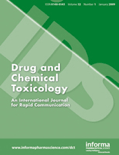
DRUG AND CHEMICAL TOXICOLOGY
Decoding the impacts of chemicals on human health.Drug and Chemical Toxicology is a well-respected journal in the fields of toxicology, pharmacology, and public health, published by Taylor & Francis Ltd. Since its inception in 1978, this journal has diligently explored the effects and mechanisms of chemical exposures on health and the environment, fulfilling a crucial role in advancing scientific understanding and safeguarding public health. The journal is indexed across prestigious databases and features an impressive array of articles categorized within the Q2 and Q3 quartiles across various categories in 2023, reflecting its significance in Chemical Health and Safety as well as Environmental and Occupational Health disciplines. With an extensive reach and a focus on interdisciplinary research, Drug and Chemical Toxicology offers a rich repository of original research, reviews, and methodological advancements, catering to a diverse audience of researchers, professionals, and students dedicated to the betterment of safety and health standards. Although not an open-access publication, its articles are widely accessible to the academic community, ensuring that critical innovations and insights are shared for the greater good.
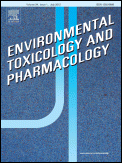
Environmental Toxicology and Pharmacology
Innovating research in environmental health dynamics.Environmental Toxicology and Pharmacology, published by Elsevier, is a leading journal dedicated to advancing our understanding of the effects of environmental pollutants on biological systems. With an ISSN of 1382-6689 and an E-ISSN of 1872-7077, this journal covers a wide range of studies related to toxicology, pharmacology, and environmental health. The journal is classified as Q2 in key categories such as Health, Toxicology and Mutagenesis and Medicine (miscellaneous), and sits impressively in Q1 for Toxicology, reflecting its strong impact in the field. As of 2023, it ranks #30 out of 133 in Toxicology and #40 out of 148 in Health, indicating its high relevance and contribution to research. While the journal is not currently open access, it remains a pivotal resource for researchers, professionals, and students seeking to explore the intricacies of environmental health effects. Its commitment to publishing high-quality peer-reviewed research positions it as a crucial platform for scientific dialogue and discovery.